On March 10, 2023, Institute for War and Peace Reporting regional representative office in Central Asia (IWPR CA) held an international expert panel exploring the changing geopolitical agendas of the US and the EU toward Central Asia. The panel gathered around 45 participants in total. Watch the full video broadcast at the bottom of this highlight.
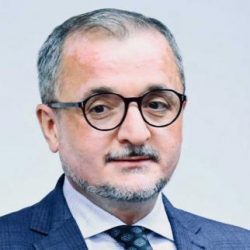
In his opening remarks, the Regional Director of the IWPR, Abakhon Sultonazarov, highlighted IWPR CA’s active role in facilitating policy and expert dialogue between various regional actors bringing them together and solving challenging issues in Central Asia. Mr Sultonazarov accentuated the importance of revisiting the Western strategies in the region amidst the war in Ukraine, which surfaced many problems and created multiple challenges. The panel is a series of expert talks under the ‘Amplify, Verify, Engage: Information for Democratisation and Good Governance in Eurasia’ project generously funded by the Norwegian Government.
Dr Nargis Kassenova moderated the discussion. She is a Senior Fellow and Director of the Program on Central Asia at Davis Center for Russian and Eurasian Studies, Harvard University.
The panel speakers were:
- Ambassador George Krol, an Adjunct U.S. Naval War College professor and former US Ambassador to Kazakhstan and Uzbekistan, was a keynote speaker.
- Dr Brianne Todd, a Country Director on Central Asia, Office of the Under Secretary of Defense for Policy, Adjunct Assistant Professor at the Center for Security Studies (CSS).
- Dr Zhanibek Arynov, an Assistant Professor at the Graduate School of Public Policy, Nazarbayev University (Kazakhstan).
- Dr Karolina Kluczewska, a postdoctoral researcher at the Ghent Institute for International and European Studies (GIES).
- Dr Fabienne Bossuyt, an Associate Professor at Ghent University and co-coordinator of the Ghent Institute for International and European Studies (GIES).
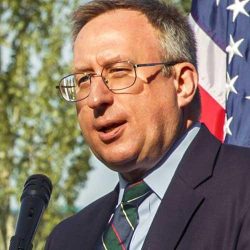
Ambassador Krol started his intervention with the US Secretary of State Anthony Blinken’s visit to Central Asia’s Kazakhstan and Uzbekistan. He emphasised the timing of the visit and the highest level of Biden’s administration term since the Russian invasion of Ukraine and the US withdrawal from Afghanistan, a seismic shift of the American foreign policy toward Central Asia. Both events affected the US policy and presence in the region.
He said the Ukraine war was a decisive factor in Secretary Blinken’s visit to the region. The visit demonstrated to Central Asia and its big neighbours, Russia and China that it had not abandoned the region. Although the region is not critical to US security and economic interests, the visit still demonstrated symbolic support against Russian and Chinese dominance.
The visit to Kazakhstan and the holding of the C5+1 meeting in Astana signified a warming relationship between the two countries, which chilled after the January events in 2022. There were no high-level calls of support to president Tokayev at the time. There were even calls in the US Congress for sanctions against Kazakhstan. But the Ukraine war a month later last year changed the dynamic, pulling back the US from its initial rhetoric. The US welcomed Astana’s positioning at the UN on the matter of Russia’s war against Ukraine, Tokayev’s stance on Russia’s annexation of Ukraine’s territories and sending the ‘comfort yurts’ (‘Yurt Of Invincibility’ is the original term – edit.) to the town of Bucha.
Secretary Blinken’s visit to Uzbekistan reflects a change in American foreign policy that preceded Biden’s administration which focused more on Uzbekistan as the key partner in Central Asia. Although the State Secretary met with other Central Asian foreign ministers, there was no commitment to his visiting them except to express their sovereignty and territorial integrity.
The rhetoric of the visit heightened US concerns about China’s position in Central Asia and the potential threat of Russia to the region after its invasion of Ukraine. The changing rhetoric of Blinken’s visit specifically defended the rules-based order concerning Russia and China, but also in the region, encouraging Central Asian countries to respect it.
See also: The Multifaceted Nature of Security Problems in Central Asia: Foresight for 2023
According to Ambassador Krol, Blinken’s visit did not mention the ‘War on terror’ or countering Islamic extremism or the Afghanistan issue, which previously was a centrepiece of the US policy in the region. There was nothing said about the security presence of the US in Central Asia, and no intention to come back to the area in that sense. There was a muted mention of the hydrocarbons, transit routes, the new Silk Road or the Middle Corridor. Instead, the American initiative is still focused on regional interconnectivity and inter-regional trade and the overall economic resilience of Central Asia.
As expressed by Ambassador Krol, there was less emphasis on promoting democracy and human rights in the region. There is also support for the reform plans in Kazakhstan and Uzbekistan leaderships, and
Instead, the US is putting more effort into English language training efforts, a softer way of promoting civil society, but not actually mentioning it.
The US is trying to avoid negative consequences for Central Asia due to the sanctions imposed on Russia over the Ukraine war. The US government is showing a pragmatic and understanding approach towards Central Asia, recognising the region’s delicate position between Russia and China. The US has no intention of damaging Tengiz Chevroil, which remains the most significant American investment in the area.
The conflict in Ukraine has heightened the US’s attention to the region, but its policies aim to prevent Russian or Chinese domination in Central Asia and globally. It is essential to note that the US sees Central Asia as a peripheral region. Interesting fact: under the Biden administration, Central Asian affairs are now under the Russia department, while previously, the region was under the South and Central Asia divisions. The current US foreign policy strategy sees Central Asia as part of other regional policies, and it is crucial to understand this context when assessing US engagement with the region.
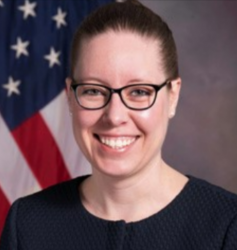
Dr Todd continued on the US Secretary of State’s visit to Central Asia, specifically about the domestic and regional considerations for the US engagement. She noted the popular narrative of the renewed interest in Central Asia because of the war in Ukraine, which, in fact, has been consistent over the years since Central Asian states gained independence in 1991. She exemplified this by Kazakhstan, mentioning its denuclearisation policy supported by the US and many other achievements between the two countries’ relations.
Regarding opportunities, the US continues its C5+1 format and various working group formats on security, energy, climate change, etc., depending on the demand of CA states. Addressing the criticism of the lack of high-level visits besides Secretary Blinken’s, she mentioned the CA Deputy Ministers of Defence visiting the United States, US officials going to the region and the Deputy Assistant Secretary and Assistant Secretary levels. The problem is not the lack of visits but the lack of visibility, often at the request of the Central Asians. This raises the question of to what extent Central Asian partners want to publicise those mutual visits.
Despite the US withdrawal from Afghanistan, there is much work on border security and counter-terrorism. The interest and initiative of the US remain. The challenge here is the lack of resources, which were previously more available due to the US presence in Afghanistan.
Another area of security cooperation is the repatriation of women and children from Syria. Most recently, a group of 59 Kyrgyz citizens returned to the country. Uzbekistan and Kazakhstan were also successful on that front. Again, the US closely worked with its Central Asian counterparts and supported these initiatives.
In terms of challenges, as previously mentioned, there is a lack of visibility of the successful joint initiatives and lots of work behind the scenes. The central question is:
This question is also a concern for the Central Asian governments and the US military departure from the region.
The lack of demonstrated constancy on both sides harbours lingering distrust regarding the US’s long-term commitment to the region. Similarly, the US is doubtful about the CA partnership commitments against the other players’ probable more luring proposals.
An important factor is the US Congress, which plays a tremendous role in US foreign policy oversight and appropriating funding. The many dissenting voices and institutions shaping the US foreign policy complicate its united front toward Central Asia, which is also reflected in the inability to direct private investment and economic opportunities to Central Asia.
Finally, Central Asia has various options regarding whom to partner with, which brings specific implications. For example, CA’s inclination toward cooperation with Russia, especially in the defence realm, such as procurement of equipment or spare parts for Russian equipment, can bring potential risks.
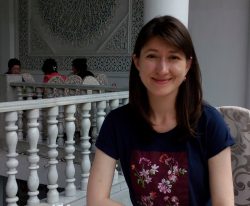
Following up, the discussion turned to Europe. Dr Karolina Kluczewska contextualised the European Union’s approaches toward Central Asia, outlining its institutional specificities and complexities, the incoherence of the EU foreign policy toward the region and the general evolution of the EU approaches.
She accentuated the diversity of actors, understandings and interests within the EU toward Central Asia due to the former’s complex nature and multilateral governance, such as the European External Action Service, advocating for more engagement with CA and the European Parliament, being sceptical about more enhanced cooperation with the region due to its human rights record. The European Commission also has mainly energy interests in the area. There are also the varying interests of the member-states of the EU. So this multitude of actors and interests explains the bureaucracy of the decision-making processes regarding foreign policy toward Central Asia.
The evolution of EU views of the region reflects the changing narrative from Central Asia being an extension of Russia in the early 90s to becoming a more complicated security concern in the late 90s due to internal conflicts in the region. During the ‘War on Terror’ decade, the EU perceived Central Asia as a ‘buffer zone’ between itself and unstable Afghanistan. On the other hand, the overall perception of Central Asia has been of the ‘neighbour of the neighbour’ due to more emphasis on Eastern Partnership countries. The 2019 EU Strategy toward Central Asia demonstrates a contradiction when on the one hand EU wants to listen to the local needs of Central Asia and, on the other, sees the region through the prism of Russia and China rivalry. Still, the EU sees itself as the leading provider of liberal values in the region.
After the start of the Ukraine war, the EU is trying to amplify its strengths in approaching the region. Several high-level visits to the area and the discussions of the Enhanced Partnership Agreement with Tajikistan demonstrate this. Through its work, the EU attempts to strengthen the incentives for the CA economies to lean toward the EU and to lower the region’s dependence on Russia.
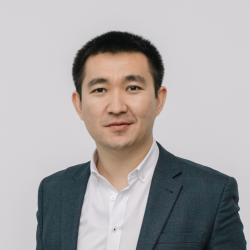
Dr Zhanibek Arynov provided an overview of the EU engagement with Central Asia, stating the insignificant role of Central Asia to the EU is one of the defining factors of the EU’s limited work in the region.
Dr Arynov stated the EU’s energy demands and transport routes and how both have been on the agenda even before the Ukraine war. But more specifically, Europe’s enhanced interest in energy diversification and what role Central Asian states could play in it, especially in rare earth metals and oil supply.
He admitted the EU could do more for the human dimension, such as supporting youth initiatives in Central Asia as it enjoys a relatively high reputation in the region’s countries compared to a growing degree of sinophobia in Kazakhstan and Kyrgyzstan, but also possibly changing Central Asians’ attitude toward Russia against the background its war against Ukraine.

Dr Fabienne Bossuyt critically assessed the EU’s democracy promotion and support for human rights and civil society in Central Asia, underlining the EU’s ambiguous track record in that dimension. Democracy promotion became more prominent in the EU agenda since the mid-2000s, and the latest 2019 Strategy prioritises it as one of the critical issues. It exists on paper; however, the tangible results have been limited, as is its scope, because the region, as pointed out by all speakers, rests in the periphery of the interests of the Western actors.
The explanation of the limited impact beyond the restricted budget for the EU activities in the region included a lack of incentives, especially if compared with the Eastern Partnership countries. Moreover, the EU’s bureaucratic gaucherie in spreading its development aid, along with the lack of a conditionality approach and the prevalence of interests over values, have all prevented the successful undertaking of democracy promotion.
Stability in Central Asia is more prioritised than democracy. Despite the Central Asian regimes’ highly authoritarian governance models, the EU keeps friendly relations with them.
Dr Bossuyt also raised an essential angle of looking at the EU democracy promotion and civil society support through the deficiency of the neoliberal approach of value promotion and the Eurocentric fixation on norm sharing in Central Asia. This approach is technocratic and managerial in nature, copying externally moulded ready-made solutions and pasting them into the context of Central Asian societies.
Regarding the substance of such ‘solutions’ – their neoliberal thinking of the ‘State – civil society – markets’ triangle does not work in Central Asia.
For the EU democracy promotion and support for the civil society approach to be more prosperous, it needs to engage the local ownership and understand the local context and value systems and local democratic practices.
Examples could be the centrality of social trust and solidarity and local norms of self-reliance and self-governance manifested during the COVID-19 crisis. Indeed, some practices of self-governance and self-reliance have their flaws. Some trust networks in rural areas are patrimonial and patriarchal and not void of opportunistic behaviour on behalf of the ‘patron’, so this is not a panacea either. Nevertheless, one cannot be uncritical of local self-governance forms and practices.
The discussion was followed by the Question&Answer session, during which the participants had a chance to inquire about the issues raised during the talk – the future of democracy promotion in the region, biosafety, and prospects of imposing secondary sanctions toward Central Asian states.
In the Q&A session, Dr Brianne Tood, while addressing the future of democracy promotion, mentioned the importance of the work done ‘behind the scenes’, where she brought up several Congressional visits to the region over the last year regarding Kazakhstan’s ‘January events’ and the situation in Uzbekistan’s Karakalpakstan and Tajikistan’s GBAO region.
Other questions from the audience concerned the Ferghana valley border clashes along the Kyrgyz-Tajik border and whether the US/EU position over the CA border security and stability is changing in the near term. Ambassador Krol underlined the importance of the bilateral mechanism of regulation of the conflicts. He mentioned the case of the Kempir-Abad water reservoir on the Kyrgyz-Uzbek border, and both parties came to an agreement. However, with the absence of the dominant power in the region, as was the case during the Soviet time, there is also a lack of a regional resolving mechanism for the conflicts. So it remains difficult to conceive of ways to deal with regional conflicts.

